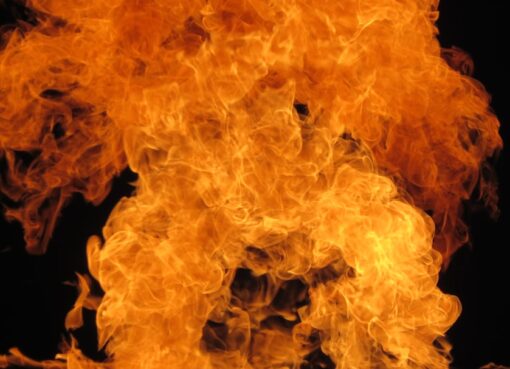Effective SWPPP Implementation for Stormwater Management

A Stormwater Pollution Prevention Plan (SWPPP) is a comprehensive document that outlines the potential sources of stormwater pollution at a construction site and the measures that will be implemented to prevent or minimize the impact of such pollution. The SWPPP is a requirement under the Clean Water Act and is designed to protect water quality by controlling pollutants in stormwater runoff. The SWPPP must be developed before any construction activities begin and must be implemented throughout the duration of the project.
The SWPPP typically includes a site description, potential sources of pollution, control measures, and a monitoring and inspection plan. It also outlines the responsibilities of the various parties involved in the construction project, including the owner, operator, and contractors. The SWPPP is a living document that should be updated as necessary to reflect changes in site conditions, construction activities, or regulatory requirements. It is important for all parties involved in the construction project to understand the SWPPP and their roles and responsibilities in implementing it effectively.
Developing an Effective SWPPP
Developing an effective SWPPP requires a thorough understanding of the potential sources of stormwater pollution at a construction site and the best management practices (BMPs) that can be implemented to prevent or minimize the impact of such pollution. The first step in developing an effective SWPPP is to conduct a site assessment to identify potential sources of pollution, such as sediment, chemicals, and construction debris. This assessment should also consider the site’s proximity to water bodies and the potential for stormwater runoff.
Once potential sources of pollution have been identified, the next step is to develop a plan for implementing BMPs to control these pollutants. BMPs may include erosion and sediment control measures, such as silt fences and sediment basins, as well as measures to control chemical and waste materials, such as spill prevention and containment measures. The SWPPP should also include a plan for managing stormwater runoff, such as through the use of vegetated swales or retention ponds.
In addition to identifying potential sources of pollution and implementing BMPs, the SWPPP should also include a monitoring and inspection plan to ensure that the measures outlined in the plan are being implemented effectively. This may include regular inspections of erosion and sediment control measures, as well as monitoring of stormwater discharges for pollutants. Developing an effective SWPPP requires collaboration and communication among all parties involved in the construction project to ensure that the plan reflects the site’s specific conditions and that all parties understand their roles and responsibilities in implementing the plan.
Key Takeaways
- SWPPP is a plan designed to prevent stormwater pollution and protect water quality.
- An effective SWPPP involves identifying potential sources of pollution, implementing control measures, and establishing monitoring and reporting procedures.
- Best Management Practices (BMPs) are essential for effective stormwater management and may include erosion control, sedimentation basins, and vegetative buffers.
- Training and education are crucial for ensuring that all employees understand their roles and responsibilities in implementing the SWPPP.
- Regular monitoring and inspections are necessary to ensure compliance with the SWPPP and identify any necessary updates or adaptations.
Implementing Best Management Practices (BMPs) for Stormwater Management
Implementing best management practices (BMPs) is a critical component of stormwater management and is a key element of an effective SWPPP. BMPs are measures that can be implemented to prevent or minimize the impact of stormwater pollution at a construction site. These measures are designed to control pollutants in stormwater runoff and protect water quality.
There are many different types of BMPs that can be implemented at a construction site, depending on the specific site conditions and potential sources of pollution. Erosion and sediment control measures, such as silt fences, sediment basins, and erosion control blankets, are commonly used to prevent sediment from being carried off-site by stormwater runoff. These measures help to protect water quality by preventing sediment from entering water bodies and causing turbidity.
In addition to erosion and sediment control measures, there are also BMPs that can be implemented to control chemical and waste materials at a construction site. For example, spill prevention and containment measures can be put in place to prevent chemicals and other hazardous materials from entering stormwater runoff. These measures may include secondary containment for storage areas, as well as spill kits and training for workers on proper handling and disposal of hazardous materials.
Managing stormwater runoff is another important aspect of implementing BMPs for stormwater management. This may involve using vegetated swales or retention ponds to capture and treat stormwater runoff before it is discharged off-site. These measures help to remove pollutants from stormwater before it enters water bodies, protecting water quality and aquatic habitats.
Training and Education for SWPPP Implementation
Training and education are essential components of successful SWPPP implementation. All parties involved in a construction project, including the owner, operator, contractors, and workers, must be trained on the requirements of the SWPPP and their roles and responsibilities in implementing it effectively. This may include training on erosion and sediment control measures, spill prevention and containment measures, and proper handling and disposal of hazardous materials.
In addition to training on specific BMPs, it is also important for all parties involved in the construction project to understand the importance of stormwater management and their role in protecting water quality. This may involve education on the potential impacts of stormwater pollution on aquatic habitats and the environment, as well as the regulatory requirements for controlling pollutants in stormwater runoff.
Training and education should be ongoing throughout the duration of the construction project to ensure that all parties remain informed about their roles and responsibilities in implementing the SWPPP effectively. This may include regular training sessions, toolbox talks, or other forms of communication to reinforce the importance of stormwater management and BMP implementation.
Monitoring and Inspections for SWPPP Compliance
| Monitoring and Inspections for SWPPP Compliance | Frequency | Responsible Party | Documentation |
|---|---|---|---|
| Site Inspections | Weekly | Site Supervisor | Inspection Reports |
| Stormwater Sampling | Monthly | Environmental Consultant | Sampling Results |
| Spill Prevention Measures | As needed | Facility Manager | Spill Response Records |
Monitoring and inspections are critical components of ensuring SWPPP compliance and the effectiveness of BMP implementation. The SWPPP should include a monitoring and inspection plan that outlines how often inspections will be conducted, what will be inspected, and how monitoring data will be collected and analyzed.
Regular inspections should be conducted to ensure that erosion and sediment control measures are functioning properly and that there are no signs of sediment leaving the construction site. Inspections should also be conducted to ensure that chemical and waste materials are being properly managed and that there are no signs of spills or leaks that could impact stormwater quality.
In addition to regular inspections, monitoring may also be conducted to assess the quality of stormwater runoff leaving the construction site. This may involve collecting samples of stormwater runoff and analyzing them for pollutants such as sediment, chemicals, or other contaminants. Monitoring data can help to identify any potential issues with BMP implementation and inform any necessary adjustments to the SWPPP.
It is important for all parties involved in the construction project to understand their roles and responsibilities in conducting inspections and monitoring activities. This may involve training on how to conduct inspections effectively, as well as communication on how monitoring data will be collected, analyzed, and reported.
Adapting and Updating the SWPPP as Needed
The SWPPP is a living document that should be adapted and updated as necessary to reflect changes in site conditions, construction activities, or regulatory requirements. As construction activities progress, it may become necessary to adjust the SWPPP to address any new potential sources of pollution or changes in stormwater management needs.
For example, if new areas of disturbance are created during construction activities, it may be necessary to implement additional erosion and sediment control measures to prevent sediment from leaving these areas. Similarly, if new chemicals or waste materials are introduced to the construction site, it may be necessary to update spill prevention and containment measures to address these new materials.
Regulatory requirements for stormwater management may also change over time, requiring updates to the SWPPP to ensure compliance with current regulations. It is important for all parties involved in the construction project to stay informed about any changes in regulatory requirements that may impact stormwater management at the site.
Adapting and updating the SWPPP as needed requires collaboration and communication among all parties involved in the construction project. This may involve regular meetings or discussions to assess any changes in site conditions or regulatory requirements that may necessitate updates to the SWPPP.
Collaboration and Communication for Successful SWPPP Implementation

Collaboration and communication are essential for successful SWPPP implementation. All parties involved in a construction project must work together to ensure that the SWPPP is effectively implemented throughout the duration of the project. This may involve regular meetings or discussions to review progress on BMP implementation, address any issues or concerns related to stormwater management, and make any necessary adjustments to the SWPPP.
Effective communication is also important for ensuring that all parties understand their roles and responsibilities in implementing the SWPPP. This may involve regular training sessions or toolbox talks to reinforce the importance of stormwater management and BMP implementation.
In addition to collaboration among parties involved in the construction project, it is also important to communicate with regulatory agencies responsible for overseeing stormwater management at construction sites. This may involve submitting regular reports on BMP implementation or responding to any inquiries or requests for information related to stormwater management.
Overall, successful SWPPP implementation requires ongoing collaboration and communication among all parties involved in a construction project, as well as with regulatory agencies responsible for overseeing stormwater management. By working together effectively, all parties can ensure that the SWPPP is implemented successfully and that water quality is protected throughout the duration of the project.
Looking for ways to streamline your stormwater pollution prevention plan (SWPPP) process? Check out this article on Superlight App, a powerful tool designed to simplify and optimize SWPPP management. With its user-friendly interface and comprehensive features, Superlight App can help you efficiently create, track, and update your SWPPP, ensuring compliance with regulations and minimizing environmental impact. Discover how this innovative app can revolutionize your approach to stormwater management.
FAQs
What is a SWPPP?
A SWPPP, or Stormwater Pollution Prevention Plan, is a comprehensive plan designed to prevent stormwater pollution on construction sites. It outlines best management practices to control erosion and sedimentation, and to minimize the discharge of pollutants into stormwater systems.
Why is a SWPPP important?
A SWPPP is important because it helps to protect water quality by preventing pollutants from entering stormwater systems. It also helps construction sites comply with environmental regulations and permits.
What does a SWPPP typically include?
A SWPPP typically includes site maps, erosion and sediment control measures, spill prevention and response procedures, inspection and maintenance schedules, and employee training programs.
Who is responsible for developing a SWPPP?
The responsibility for developing a SWPPP typically falls on the construction site operator or the project manager. They may work with environmental consultants or engineers to develop the plan.
Are there regulations that require a SWPPP?
Yes, in the United States, the Clean Water Act requires construction sites to obtain a National Pollutant Discharge Elimination System (NPDES) permit, which includes the development and implementation of a SWPPP.
How often should a SWPPP be updated?
A SWPPP should be updated whenever there are significant changes to the construction site, such as changes in design, land use, or erosion control measures. It should also be updated at least once a year, or as required by the NPDES permit.
Leave a Reply
You must be logged in to post a comment.



Leave a Comment